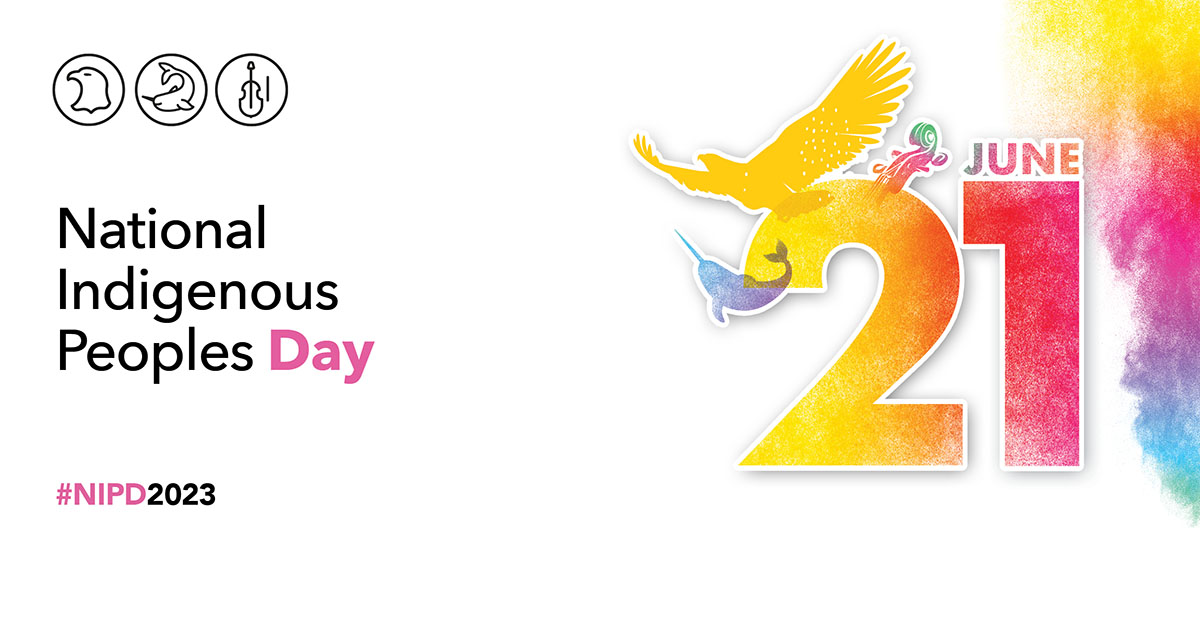
Written by: Kelly Park, Communications Manager
June is National Indigenous History Month, which is a time to learn about the diverse customs, traditions, and personal experiences of First Nations, Inuit and Métis people. We want to celebrate some of the many amazing renewable energy projects that are Indigenous owned and led in now-called Canada.
While we are showcasing some of the electricity projects that exist today, we also recognize the history of electricity with Indigenous populations has been complex and marked by challenges. Indigenous communities in Canada still face numerous challenges in accessing and benefiting from electricity today.
In earlier years, many remote and rural Indigenous communities were left without electricity due to the lack of infrastructure and limited resources. Many communities still rely on fossil fuels for electricity which is unreliable and emits pollution into their communities. This has created a significant disparity between Indigenous and non-Indigenous communities in terms of access to modern amenities and basic necessities. There continues to be many other issues, like access to clean drinking water, many Indigenous communities face today which need to be fixed immediately. We do not ignore or deny these ongoing problems and also celebrate the amazing work Indigenous folks are doing today while facing these injustices.
This post highlights the climate resilience, leadership and knowledge of Indigenous people in sustainability. A 2020 report by Indigenous Clean Energy found 197 medium to large renewable energy projects with Indigenous involvement, either in operation or in the final stages of planning and construction. Here are 5 Indigenous owned and led renewable energy projects that are producing clean energy, local economic benefits and reducing greenhouse gas emissions.
1. Fort Severn First Nation
View this post on Instagram
Fort Severn First Nation, Ontario’s most northern First Nation, built a solar power project, which will help them transition off diesel fuel. The 300-kilowatt solar project was connected to their micro-grid in October 2021.
Fort Severn First Nation is a remote northern community of about 500 people. All the project materials were delivered by air, a once-a-year barge or a 750-km winter road.
“It’s not just my community. I am showing the world, if I can do this here, being so remote, we can do this anywhere.” Fort Severn Chief, Paul Burke. (CBC article)
It’s important for Indigenous people in now-called Canada to own their renewable energy projects. When Indigenous people have control over these projects, they can make decisions that match their cultural values and help their local economy.
2. Fort Nelson First Nation
View this post on Instagram
The Tu Deh-Kah Geothermal project is owned by Fort Nelson First Nation in northern BC. It’s an exciting example of Indigenous leadership in the renewable energy industry and 100% community led project.
The Tu Deh-Kah Geothermal project is expected to produce enough electricity to power 14,000 homes. Construction work is expected to begin by 2024 with a target to be in operation by 2026.
The project will transform a natural gas field nearing its end into a source of renewable energy for remote communities.
This project will help the community economically and help transition them off fossil fuels.
3. Cowessess First Nation
View this post on Instagram
Cowessess First Nation has built amazing renewable energy projects. Each one is a step towards @cowessessfn goal of becoming the greenest First Nation in now-called Canada. Check out how they’re using RE to make income for their community and fight climate change:
1. Awasis Solar Project, owned majority by Cowessess FN, provides solar energy to the Sask. electricity grid — enough to provide power to 2,500 homes a year. ☀
2. A hybrid solar/wind project whose power can be stored in energy batteries is the first of its kind! 🔋
3. Bekevar Wind Energy Project, partially owned by Cowessess, is being built and will generate power for up to 100,000 homes a year. 🌬
4. 800+ solar panels are installed on community buildings, including the school and seniors’ centre. Energy from these solar panels will offset the energy use of these 5 buildings in the community. 🏘
Cowessess First Nation is a powerful leader in renewable energy for all people to see. The Nation is a fantastic example of Indigenous leadership in fighting climate change.
4. Meadow Lake Tribal Council
View this post on Instagram
Meadow Lake Tribal Council’s sawmill has become the first Indigenous-owned bioenergy centre in Canada, using the leftover wood chips, bark and sawdust to generate enough electricity to heat 5,000 homes AND reducing emissions.
For 50 years, the Indigenous-owned sawmill has burned its wood waste — including bark, wood chips, and sawdust. Almost a quarter of each tree harvested from traditional land was being wasted, but now it’s being generated into power and heat!
“The project is expected to decrease greenhouse gas emissions by more than one million tonnes over 25 years and reduce smoke and other harmful matter to significantly improve air quality for residents,” said a Government of Canada news release.
From pollution to green power – the Meadow Lake Tribal Council is taking advantage of wasted wood materials for better, clean energy purposes.
5. Hupačasath First Nation

The Hupacasath First Nation built a First Nation micro-hydro operation with the China Creek Micro-Hydro Power Plant that has been in operation since 2006. The run-of-river hydro-electric project produces electricity for about 6,000 homes.
Hupačasath First Nation created the Upnit Power Corporation and own 72.5% controlling interest of the project.
“We believe in the right of self-determination,” says Judith Sayers. “We own 72.5 per cent of this project. We get to set the standards. And through setting the standards of how we operate, we also manage our territory, the land, the water, and that was one of the great benefits of doing this. And so we get to make the decisions,” said Judith Sayers, a former chief. (Pembina Institute Blog)
Some run-of-river projects can have negative environmental effects, specifically on fish populations. But, when these projects are owned by First Nations it creates pressure on developers, companies and government for these projects to be built well and to minimize avoidable environmental impacts.
These are five incredible examples of Indigenous people leading the transition to 100% renewables. We should look to them for their knowledge and power in the fight against climate change. During Indigenous History Month and every day we want to showcase the ideas, knowledge and resiliency of First Nation, Inuit and Métis.

